What's Inside the Fastener, Engineers and Electrical Black Books
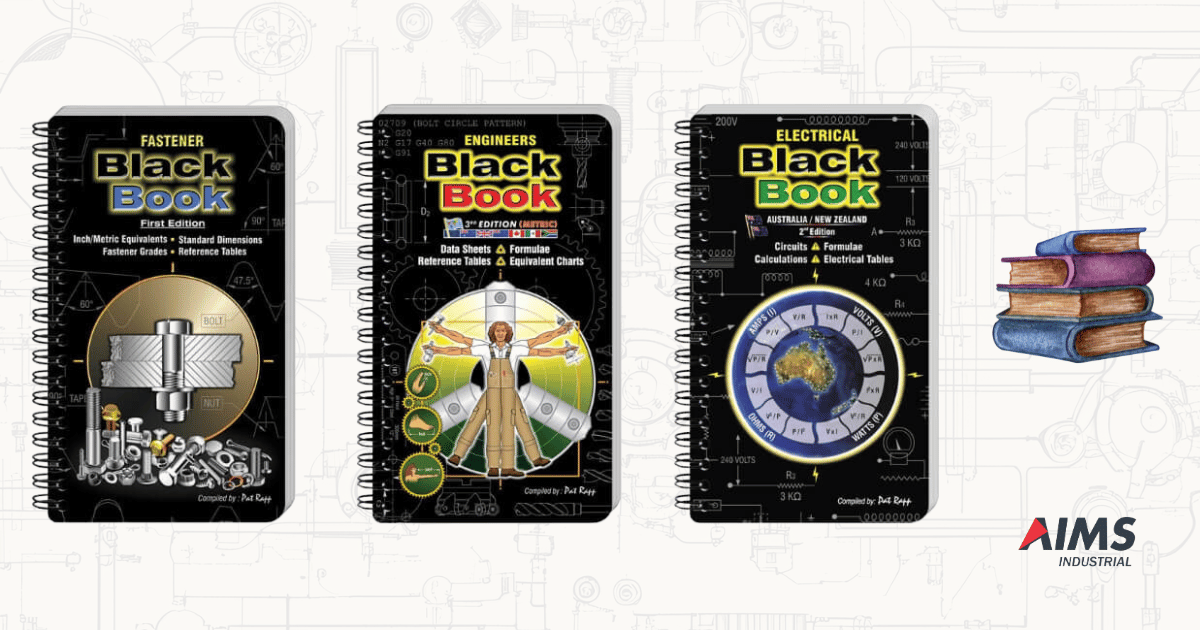
.png)
- Contents of the Fastener Black Book (and metric-imperial specifics)
- Contents of the Engineers Black Book
- Contents of the Electrical Black Book
Notes:
- The black books covered in this article are published by Pat Rapp Enterprises and exclusively distributed in Australia and New Zealand by Sutton Tools Pty Ltd.
- This compilation only provides a quick overview of information inside the books to help buyers decide which book(s) to buy. No copyright infringement is intended.
- Publisher's Note: "The content of the black books is for general informational use only and is not intended to be treated advice or opinion. Anyone using this document should rely on his or her own independent judgement or, as appropriate, seek the advice of a licensed competent professional in determining the exercise of reasonable care in any given circumstances."
Contents of the Fastener Black Book
.jpg) The Fastener Black Book (First Edition) is a comprehensive reference guide for anyone who works with fasteners (engineers, designers, machinists etc). Here is a breakdown of the topics and information it contains:
The Fastener Black Book (First Edition) is a comprehensive reference guide for anyone who works with fasteners (engineers, designers, machinists etc). Here is a breakdown of the topics and information it contains:
- Basic fastener terminology: This includes definitions of common fastener components, types, and functions.
- Standards and specifications: You'll find explanations of thread forms, head and nut styles, along with various grading and marking systems used for fasteners.
- Material properties: The book covers common fastener materials like steel, aluminum, and plastic, along with their strengths and applications.
- Inch and metric equivalents: If you work with both inch-based and metric fasteners, this section will help you with conversions.
- Selection considerations: The Fastener Black Book provides information on factors to consider when choosing fasteners, such as thread fit, pre-load, and torque requirements.
- Special fasteners: There's also a section on self-tapping screws and other specialty fasteners.
- Identification tips: The book includes guidance on how to identify different fastener types and their properties.
- Visual aids: The Fastener Black Book may include charts, diagrams, and illustrations to aid understanding.
This is the summary of contents of first edition for metric, which is still current:
- History of screw threads (that goes back to records from around 250 BC circa-Archimedes to the modern ISO standards we know today)
- Fastener Standards
- RoHS (Restriction of Certain Hazardous Substances)
- Introduction to threaded fasteners
- Basic fastener terminology (glossary)
- Basic fastener measurement
- Abbreviations for standard threads
- Common fastener thread forms, screw and bolt heads, head drives and features and thread points
- Common workshop bolts, nails, nuts, washers
- Self-drilling screw point selection guide
- Fastener materials (kinds of alloys and steels used) and mechanical properties
- Fastener corrosion, platings, coatings and finishes
- Fastener identification tips
- Fastener tensioning tips
- Common fastener failure (and how to avoid them)
- Comparison charts (tensile strength of steel vs alloy bolts, galvanic properties, hardness etc)
- Conversion charts (tightening torque values, PSI vs MPa, socket sizes, spanner selection, drill sizes)
- Counterboring, countersinking and clearance holes
- Conversion values (metric to inch/pound and vice versa)
- Fractional and decimal equivalents charts
- Tapping charts
Also included as an accessory is a thread pitch identification gauge:
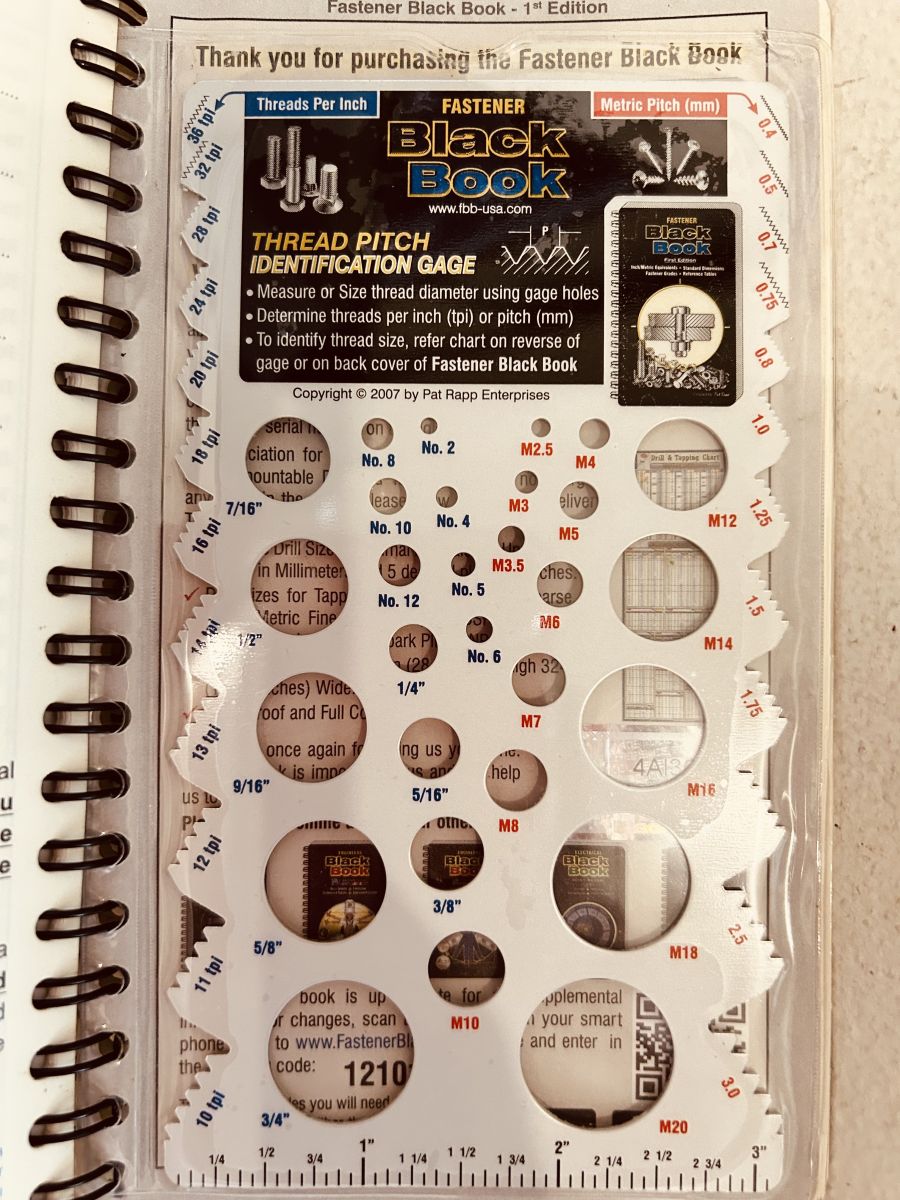
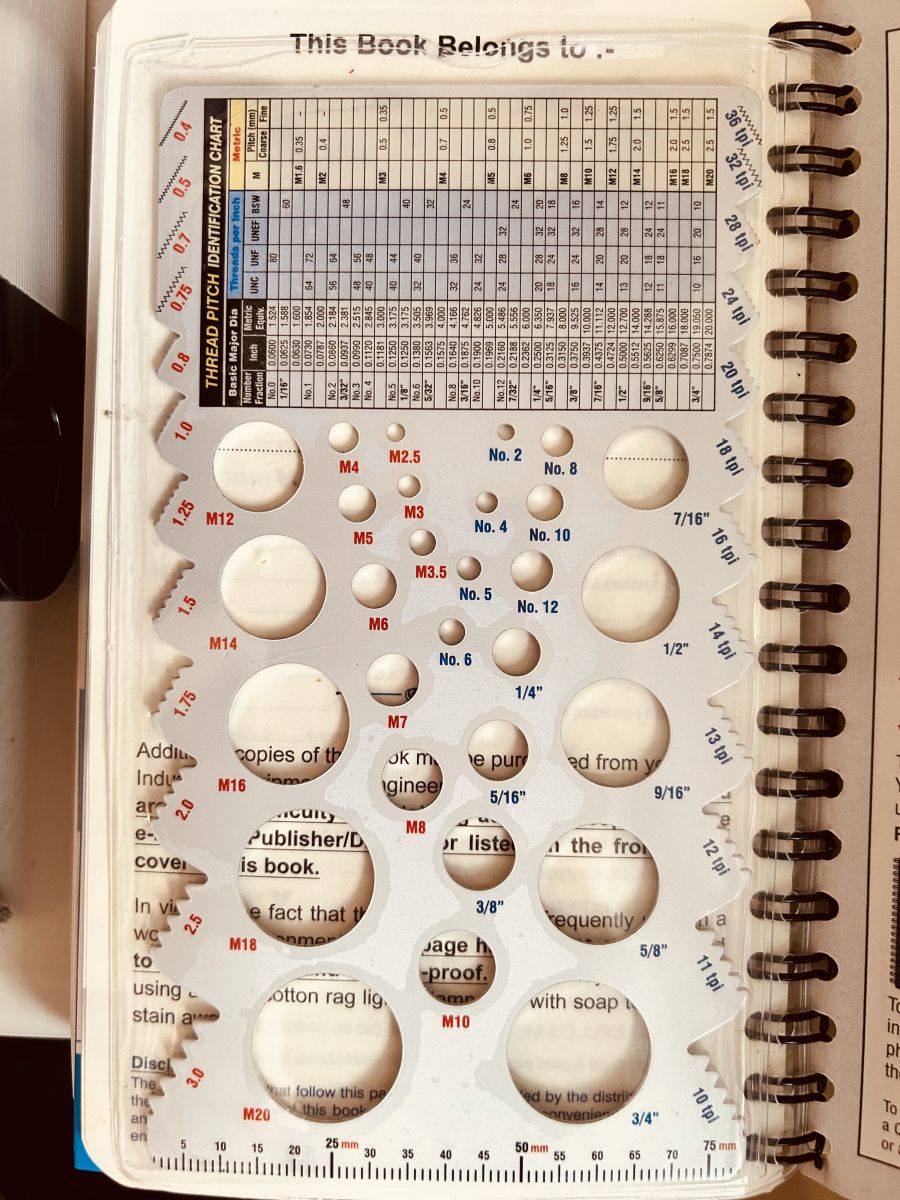
Metric and imperial fastener specifics
The Fastener Black Book colour-codes identifies measurements and sizes of metric fasteners in red and imperial fasteners in blue.
Fastener specifications and cross-references:
- ANS (American National Standard)
- ISO (International Organization for Standardization)
- DIN (Deutsches Institut für Normung) (translates to German Institute for Standardization)
*You might sometimes see DIN-ISO which refers to an ISO standard that has been adopted by Germany.
Imperial fasteners cross-references:
- UNC (Unified National Coarse)
- UNRC (Unified National Round Coarse)
- UNF (Unified National Fine)
- UNRF (Unified National Round Fine)
Most common kinds and types of fasteners are covered:
- Bolts
- Nuts
- Pins
- Rivets
- Screws (cap, machine, self-tapping, set, socket, tapping etc)
- Studs
- Washers
It also provides comprehensive information on fastener properties:
- Stainless steel fasteners
- Aluminium fasteners
- Non-ferrous fasteners
- Plastic fasteners
Contents of the Engineers Black Book
.jpg) The Engineer's Black Book (3rd Edition - Metric) is a comprehensive reference guide designed for engineers, machinists and other technical professionals.
The Engineer's Black Book (3rd Edition - Metric) is a comprehensive reference guide designed for engineers, machinists and other technical professionals.
Here is a breakdown of the topics and information it contains:
- Conversion factors: These are essential for converting between different measurement systems, such as metric and imperial.
- Geometry formulas: A collection of formulas used in various geometrical calculations.
- Threads and feeds and speeds data: This section provides engineers with data on threads, including their dimensions and specifications, as well as recommended cutting speeds and feed rates for machining operations.
- Additional topics: Depending on the specific version, the Engineer's Black Book may also cover a broader range of topics, including:
- Materials science
- Welding
- Engineering drawing standards
- Tolerances
- Bolts and nuts
- Sharpening information
Specific sections cover:
Fundamentals and Reference
- Basic concepts: Brief history of engineering, common-sense safety at work; International System of Units (SI) and conversion factors; measurement and conversion tools (drills, spanners, sockets, torque); abbreviations, symbols and standards
- Mathematical and geometrical foundations: Trigonometry, geometry and algebra formulas; angles, radians and conversions; taper calculations and applications; coordinate systems and hole spacing
Machining and Tooling
- Cutting tools and processes: Types, selection and applications of drills, reamers, end mills, hacksaw blades and bandsaw blades; drill point geometry, sharpening and speeds and feeds; coolants and lubricants; grinding wheels and mounted points
- Fasteners and joining: Types, sizes and properties of bolts, screws, nuts, washers and rivets; thread forms, tap types and tapping processes; retaining rings, O-rings and seals; welding and adhesive information (brief overview)
Metrology and Quality
- Measurement and inspection: Measuring tools and techniques (sine bars, micrometers, calipers etc); tolerances, fits and surface finish; geometric dimensioning and tolerancing (GD&T)
Materials and Metallurgy
- Material properties: Physical properties of metals, plastics and composites; material selection and comparison; heat treatment basics
- Tool materials: Tungsten carbide, ceramic, cermet, CBN and PCD cutting tool characteristics; coating technologies
Mechanical Power Transmission
- Gears and gear trains: Gear geometry, calculations and standards; gear materials and manufacturing (brief)
- Bearings: Bearing types, selection and mounting
- Power Transmission Components: Belts, pulleys and shafts (basic concepts)
Design and Drafting
- Engineering drawings: Basic drafting principles and standards; projection methods and dimensioning
- Design calculations: Formulas for areas, volumes and other geometric properties
Note:
- This summary provides a general overview of the publication's content. Specific details and depth of coverage may vary.
Contents of the Electrical Black Book
.jpg) The Electrical Black Book (2nd Edition) is a comprehensive reference guide designed for electricians, apprentices and anyone who wants to understand electrical systems better (or simply just anyone who wants to gain a better understanding of how electricity works).
The Electrical Black Book (2nd Edition) is a comprehensive reference guide designed for electricians, apprentices and anyone who wants to understand electrical systems better (or simply just anyone who wants to gain a better understanding of how electricity works).
Here is an overview of the topics and information it contains:
- Electrical fundamentals: This includes the basic concepts of electricity, electrical safety principles, and electrical codes and standards.
- Electrical materials and equipment: You'll find information about conductors, conduits, transformers, motors, and other electrical components.
- Electrical calculations and formulas: The book provides formulas and conversion factors commonly used in electrical work.
- Electrical installations: This section covers electrical wiring methods, socket outlets, switches, and enclosures.
- Emerging technologies: The Electrical Black Book also touches on newer electrical technologies like LED lighting, fiber optics and data cabling.
Specific sections cover:
Introduction and Safety
- Historical overview: Brief history of electricity
- Safety practices: Electric shock prevention and first aid; personal protective equipment (PPE); electrical safety devices and workplace management; fire extinguisher types and usage
Standards and Regulations
- Codes and standards: Overview of international and regional electrical standards (AS/NZS, NECA etc)
- Definitions and classifications: Electrical terminology, appliance classifications and plug/socket types
- Global standards: International voltages, frequencies and connector types
Electrical Fundamentals
- Electricity generation: Methods of generating electricity
- Electrical systems: Single-phase and three-phase systems
- Basic concepts: Current, voltage, resistance, and electrical symbols
- Tools and testing: Common electrician's tools and multimeters
- Electrical laws: Ohm's Law, Kirchhoff's Laws and other fundamental principles
Calculations and Formulas
- Electrical formulas: Equations for calculating power, voltage, current, resistance, impedance, reactance and other electrical parameters
- Motor calculations: Formulas for motor performance, power and speed
- Conversion factors: Unit conversions and reference data
Electrical Components and Circuits
- Passive components: Resistors, inductors, capacitors and their characteristics
- Circuits: Series, parallel and combination circuits involving reactance
- Conductors and cables: Types, standards, selection and installation
Wiring and Installations
- Wiring components: Plugs, sockets, switches and wiring diagrams
- Industrial applications: Industrial plug/socket configurations and switchgear
- Electrical plans: Symbols and layout
- Protection: Grounding, fuses and surge protection
- Lighting: Light bulb types, bases and LED technology
Conduits, Fittings, and Bending
- Conduit systems: Types, materials and installation
- Conduit bending: Techniques and tools
Emerging Technologies
- LED lighting: Characteristics, applications and precautions
- Fiber optics: Basics, termination and splicing
- Data cabling: RJ-45 wiring
Electrical Equipment
- Transformers: Types, enclosures and voltage ratings
- Motors: Types, protection and connection diagrams
Note:
- This summary provides a general overview of the publication's content. Specific details and depth of coverage may vary.
More reasons why people love the Fasteners, Engineers and Electrical Black Books
- Their pocket-sized format allows you to carry them around.
- Their lay-flat binding and grease-proof pages make them practical for workshop environments.
- Their durable construction make it a practical tool for on-the-go and on-the-job reference.
AIMS’ Note on Buying Industrial Supplies
- Breadth and depth of brands and categories: Go with a supplier that offers a wide range of reputable brands across multiple categories and sub-categories.
- Bulk purchase discounts: For large orders, check if you can take advantage of volume leverage. Some suppliers offer business accounts* that give you access to special pricing (volume discounts), preferential support and even credit eligibility (subject to supplier approval, terms and conditions).
- Product and service information: Evaluate the completeness and usefulness of data in their online product listings. Prudent suppliers will include as much useful information as possible to help you assess and compare products. In terms of service info, the supplier’s FAQs (if any) will give you a good idea of their standard policies*, processes and commitments.
- Promotions: Check for ongoing promotional campaigns so you can get the best prices. Many suppliers run regular discount-based promos. Some can point you to government-hosted rebate programmes like the SafeWork NSW $1000 Small Business Rebate.
- Safety compliance: Make sure the product in question meets Australian safety standards and regulations, especially if there are relevant compliance requirements or work health and safety (WHS) laws that apply to your business or state. Look for relevant certifications and markings where necessary.
- Supplier reliability: Choose reputable suppliers with a proven track record of delivering quality products and reliable customer service.
- Warranty and support: Check warranty terms and after-sales support* options, as this can be crucial in case of product defects or performance issues.
- Lead time and availability: Confirm product availability and estimated delivery times to avoid delays in your projects.
- Returns: Familiarise yourself with the suppliers returns and exchange policy in case you receive incorrect or damaged items.
- Delivery: Clarify delivery terms, including estimated delivery times, shipping costs and who handles insurance during transit (where applicable).
*Need help with a purchase decision? Contact us directly via chat or send an email to sales@aimsindustrial.com.au.

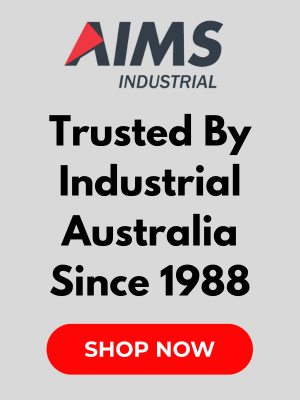
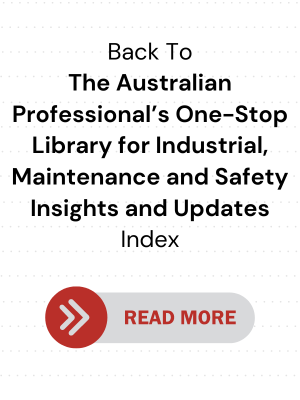
.png)